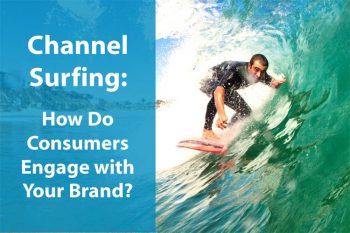
Offering anywhere/anytime connectivity to your brand is great but do you know how many of your consumers are actually speaking with you? You may be surprised to learn it’s a much smaller number than you thought (or want). Are you reaping the rewards of your “always on” customer service investments? Our recent channel surfing study suggests not.
To get at what is really going on here, we collaborated with our partners at Wilke Global to get two foundational questions in front of real world consumers:
With over 300 responses to the survey, this is what we learned:
Only 1 in 10 Consumers are Contacting Your Brand
It’s no surprise that using search engines like Google is the primary way consumers find answers for their product-related questions. Our survey indicates that in addition to online search, using digital channels like brands’ websites and e-commerce websites is also very popular. This is a clear sign that brands should provide things like online FAQs, work towards lowering the barrier to self-service and not underestimate product reviews.
From my perspective, one of the most telling results from the survey was that only a small portion of the potential consumer base is being engaged. If only 8% would contact your brand directly – how can you stay available and relevant? Is it by adding more channels?
Age As an Indicator of Consumer Research Preferences
For the most part, gender is not a very strong predictor of how consumers are likely to do research, however, when we looked at the responses by age group some interesting differences appeared.
For example, I was surprised to see that over 40% of those over 65 years old are surfing online for information. Which was higher than the youngest group that we surveyed (18 – 24 year olds). Interestingly enough, only 3% of our youngest respondents expressed a preference for contacting brands directly and they were more likely to rely on word of mouth information.
Preferences for Age Group 18-24

Phone is Still the Channel-of-Choice but Omni-Channel Strategy is a Must
Choosing the right channel strategy is vital for brands to capture and stay connected to the small portion of consumers who take the time to contact them directly. Looking at the overall results from our survey, phone and email are still the most favored channels across all age groups, however, what’s interesting is the relatively equal preference for the rest of the channels like Chat, SMS and Social.
Once we dissect the data per age groups, we observe a slightly different picture.
Only 7% of consumers aged 25 and over include social media in their contact preferences, compared to 16% of those under 25. For the youngest texting is even more popular channel than social.
Understanding the perspective of the younger consumers is crucial for brands as they plan the path ahead.
Implications for Consumer care



